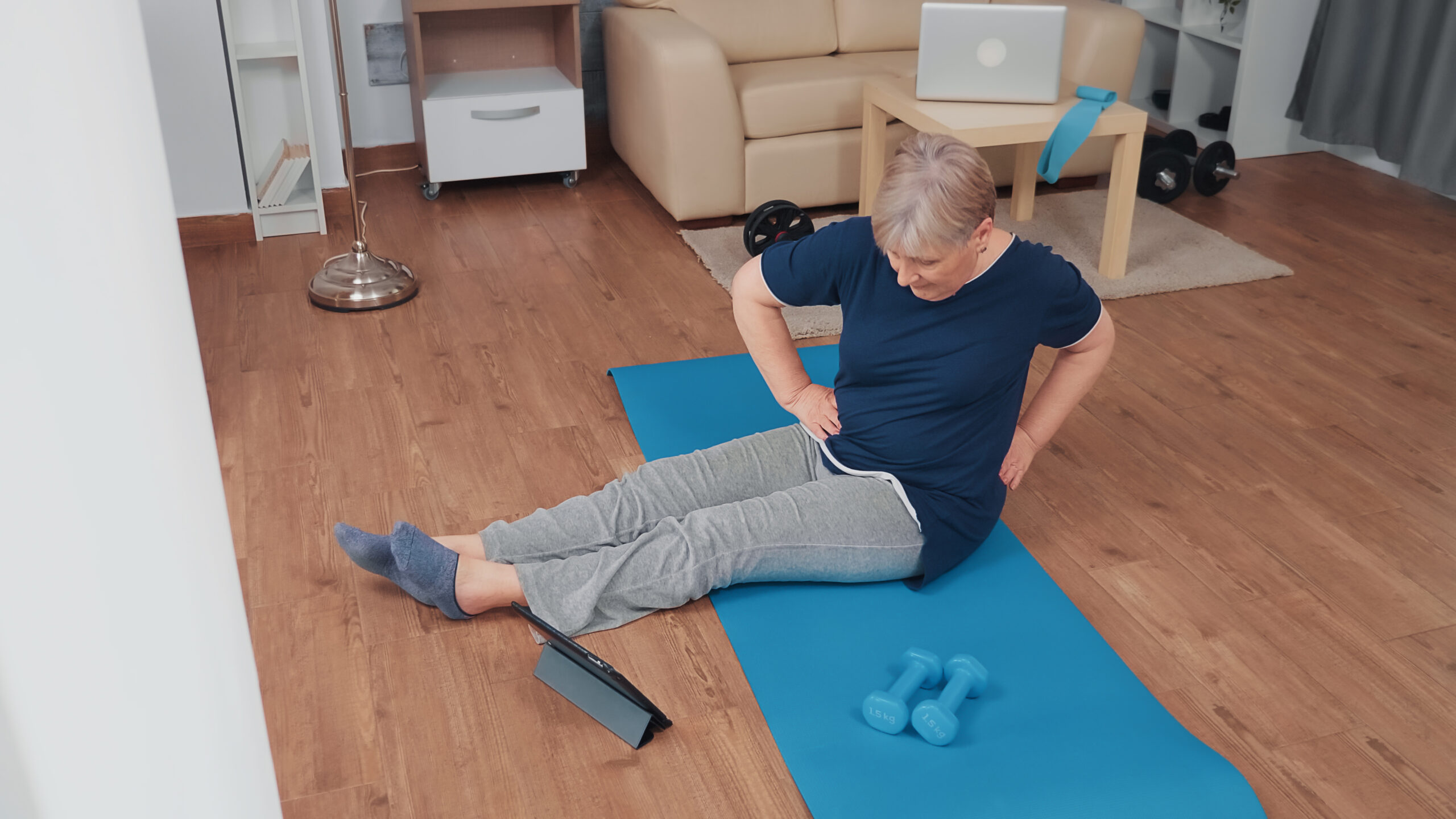Exercises and Stretches for Sciatica Relief


If you’re suffering from sciatica, there’s good news: Exercises and stretches are a viable route to sciatica relief. Sciatica is an extremely common condition, affecting about 40% of Americans at some point in their lives. Although sometimes sciatica improves on its own without significant intervention, it’s important for patients to know that there are ways to address challenging symptoms.
Sciatica is pain from damage to or pressure on the sciatic nerve. The sciatic nerve is actually the longest and thickest nerve in the body, and it originates in the lower back and then runs down through the pelvis and along the back of each leg. When the nerve arrives just below your knee, it splits into additional nerves that connect all the way down to the rest of your lower legs and feet. Because the sciatic nerve has so much reach, pain from sciatica can range from mild to severe. It can also occur anywhere from the lower back all the way down to your toes.
The pain from sciatica can manifest as a mild ache, a sharp pain, a burning sensation, or even as a jolt or electric shock. Usually the symptoms only affect one side of the body, and a combination of numbness, weakness, and pain are common.
Sciatica is not an underlying problem in and of itself, but rather a symptom of damage to the sciatic nerve. That damage can be caused by a range of injuries and conditions, herniated discs and bone spurs being the most common. Although millions of Americans experience sciatica every year, it’s uncommon to have any symptoms before the age of 20. Age is one of the biggest risk factors, especially since herniated discs often arise from regular wear and tear on the spine. Other specific conditions that cause sciatica include spinal stenosis, spondylolisthesis, pregnancy, and degenerative disk disease.
Physical therapy is a good option for many people seeking sciatica relief. Exercises and stretches for sciatica relief are targeted at reducing pressure on the nerve, which is the source of the pain. If you work with a physical therapist, they will be able to demonstrate the exercises and provide tips for completing them safely. The exact cause of your sciatica – i.e. a slipped disc vs. spinal stenosis – may also affect which exercises and stretches are the best fit for you.
In general, almost any exercise that stretches the lower back could be a good option for sciatica relief—a good rule of thumb is to hold each stretch for at least 30 seconds and maintain awareness of your pain levels throughout. Here are some options that are designed to provide relief from pain, gently stretch the area, and strengthen the spine:
Again, discussing these exercises and stretches with a physical therapist can help you determine the optimal number of reps and how many days per week you should be doing them. Leading an active lifestyle in the first place can also be one of the best ways to stave off sciatica, so there are benefits to a proactive approach as well!
There’s no doubt that sciatica can be a drag on daily life and interfere with your comfort. Although surgery might be a good option in severe cases, exercises and stretches can go a long way towards sciatica relief.